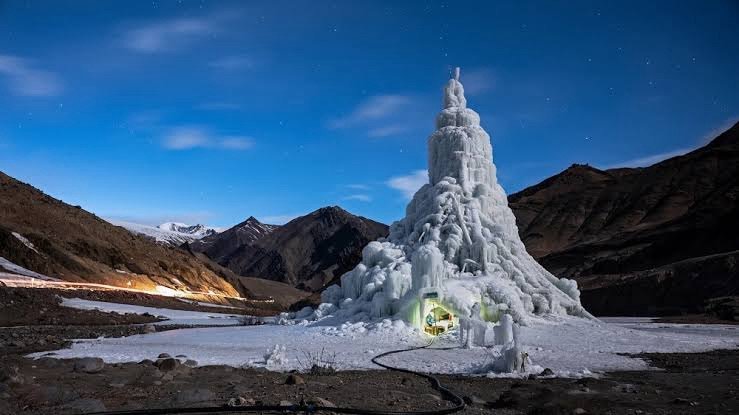Farmers in Gilgit-Baltistan turn to innovative methods to combat water scarcity
Key Takeaways:
i) Farmers in Gilgit-Baltistan, Pakistan, are utilizing “artificial glaciers” to address water shortages caused by climate change.
ii) This technique involves creating ice towers that act as natural reservoirs, providing a steady water supply for irrigation.
iii) The initiative has significantly improved water access for over 16,000 residents, allowing for increased crop yields.
Islamabad, Pakistan – April 7, 2025 – Farmers in the mountainous Gilgit-Baltistan region of northern Pakistan are employing innovative “artificial glaciers” to combat water shortages exacerbated by climate change. This technique, inspired by the work of Indian environmental activist Sonam Wangchuk in Ladakh, involves spraying water into the air during freezing winter temperatures, resulting in the formation of ice towers.
These ice formations, often resembling Buddhist stupas, function as natural reservoirs, slowly melting throughout the spring and providing a consistent water supply for irrigation. According to AFP, Zakir Hussain Zakir, a professor at the University of Baltistan, explains that, “The water must be propelled so that it freezes in the air when temperatures drop below zero, creating ice towers.”
Since the initial implementation of “ice stupas” in Gilgit-Baltistan in 2018, more than 20 villages have adopted this method.
Gilgit-Baltistan, home to over 13,000 glaciers, has experienced a reduction in snowfall due to warmer winters, impacting the critical seasonal snowmelt that feeds the valleys. Sher Muhammad, a specialist at the International Centre for Integrated Mountain Development (ICIMOD), notes, “From late October until early April, we were receiving heavy snowfall. But in the past few years, it’s quite dry.”
Since the initial implementation of “ice stupas” in Gilgit-Baltistan in 2018, more than 20 villages have adopted this method. Rashid-ud-Din, provincial head of GLOF-2, a UN-Pakistan climate change adaptation plan, reports that “more than 16,000 residents have access to water without having to build reservoirs or tanks.”
Farmer Muhammad Raza from Hussainabad states that his village constructed eight stupas this past winter, storing approximately 20 million liters of water. This has eliminated water shortages during planting seasons, enabling farmers to cultivate crops two or three times a year instead of just once.
Yasir Parvi, a local resident, observes, “Faced with climate change, there are neither rich nor poor, neither urban nor rural; the whole world has become vulnerable. In our village, with the ice stupas, we decided to take a chance.”
Keywords: Artificial Glaciers, Gilgit-Baltistan, Water Scarcity, Climate Change, Pakistan, Ice Stupas, Water Crisis, Sustainable Agriculture, Climate Adaptation, Gilgit Baltistan Farmers, Water Management Pakistan, Pakistan Water Crisis.




